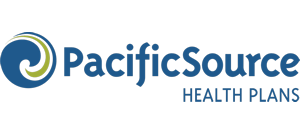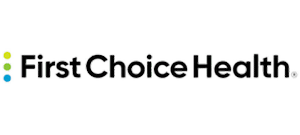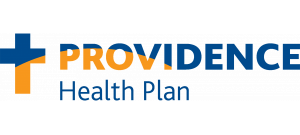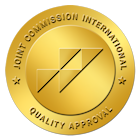At Crestview Recovery, we’ve seen firsthand how addiction affects women differently from men. Women face unique biological, psychological, and social factors that influence their substance use patterns and recovery journey. Understanding these differences is crucial for effective treatment and long-term sobriety. In this article, I’ll explore the specific challenges women face with addiction and how gender-responsive approaches, including a women’s rehab center in Portland, Oregon, can lead to better outcomes.
What is the Prevalence of Addiction in Women?
Addiction is a chronic brain disorder characterized by compulsive substance use despite harmful consequences. It alters brain function and structure, affecting behavior, judgment, and impulse control. For women, addiction often follows different patterns than it does for men.
According to the National Survey on Drug Use and Health (2022), approximately 9.2 million women aged 12 and older had a substance use disorder in the United States. This represents about 6.5% of the female population. While men still have higher overall rates of substance use disorders, the gap has narrowed significantly in recent decades.
Women often experience “telescoping,” which means they progress from initial substance use to addiction more quickly than men. This rapid progression can lead to more severe consequences in a shorter timeframe. Women also tend to enter treatment with more severe medical, behavioral, and psychological problems, despite having used less of the substance for a shorter period.
Key statistics about women and substance abuse include:
- Higher prescription rates: Women are more likely to be prescribed and use addictive medications, particularly opioids and benzodiazepines
- Co-occurring disorders: About 65% of women in substance abuse treatment have at least one co-occurring mental health condition, underscoring the importance of addressing common co-occurring disorders faced by women in treatment.
- Trauma connection: Up to 80% of women seeking treatment report a history of trauma, including physical or sexual abuse
- Treatment barriers: Only 19% of women with substance use disorders receive treatment, compared to 25% of men
How Do Biological Factors Influence Women and Drug Use?
Women’s bodies process substances differently from men’s bodies. These biological differences affect how drugs impact women and can contribute to faster development of addiction.
Hormones like estrogen and progesterone influence how women respond to drugs. Estrogen can increase the brain’s sensitivity to certain substances, potentially leading to stronger cravings or a faster progression to addiction. Hormonal fluctuations during the menstrual cycle, pregnancy, or menopause can also affect withdrawal symptoms and relapse patterns.
Women generally have higher body fat percentages and lower levels of specific enzymes that break down drugs in the liver. This means substances often remain in a woman’s system longer, creating more intense or prolonged effects from the same dose.
The physical health consequences can be more severe for women who misuse substances. For example, women who drink heavily develop liver disease, brain damage, and heart problems more quickly than men with similar drinking patterns, even when consuming less alcohol overall.
Biological Differences in Addiction Between Men and Women
| Factor | Women | Men |
|---|---|---|
| Metabolism | Slower drug breakdown due to lower enzyme levels and higher body fat | Faster metabolism; substances are processed more quickly |
| Hormonal Effects | Hormone shifts impact cravings, relapse risk, and withdrawal | Less hormonal fluctuation; fewer hormone-related effects |
| Physical Health Impact | Greater risk of liver, heart, and brain damage from shorter drug use | Health issues may develop more slowly despite prolonged use |
| Brain Response | Increased activity in stress and reward centers during substance use | Different brain patterns, often linked to risk-taking behavior |
What Substances Do Women Commonly Abuse?

Substance use patterns often differ between men and women. While men typically use larger quantities and more frequently, women may begin using substances at lower doses but develop dependence more quickly.
Alcohol affects women differently from men. Due to differences in body composition, including lower water content and higher fat percentages, women become intoxicated more quickly after consuming the same amount of alcohol as men. This leads to higher blood alcohol concentrations from equivalent drinks.
The National Institute on Alcohol Abuse and Alcoholism reports that approximately 5.4 million women in the United States had an alcohol use disorder in 2022. Long-term alcohol use in women is linked to higher risks of liver disease, heart damage, brain damage, and certain cancers. Women who drink heavily are also more likely to experience reproductive problems and pregnancy complications.
Women receive prescriptions for addictive medications more frequently than men, particularly for pain relievers, anti-anxiety medications, and sleep aids. This higher exposure increases the risk of developing a substance use disorder.
According to the Centers for Disease Control and Prevention, overdose deaths involving prescription opioids among women increased by 487% between 1999 and 2016, a rate of increase much higher than in men. Women often report using prescription drugs to cope with physical pain, manage anxiety, or improve sleep rather than for recreational purposes.
Women who use stimulants like cocaine or methamphetamine may do so to increase energy, manage weight, or improve mood. These substances can lead to rapid dependence and serious health effects, including cardiovascular problems, anxiety, and sleep disorders.
Marijuana use among women has increased significantly in recent years, with many reporting they use it for stress relief or to manage mental health symptoms. Some women also report using drugs like methamphetamine to cope with trauma or domestic violence.
How Do Mental Health and Co-Occurring Disorders Affect Women with Addiction?

Mental health conditions and substance use disorders frequently occur together in women, underscoring the complexity of addressing mental health disorders and addiction effectively. This dual diagnosis or co-occurring disorder situation requires integrated treatment that addresses both issues simultaneously.
Common co-occurring disorders in women include:
- Depression: Women experience depression at twice the rate of men, and many use substances to self-medicate symptoms
- Anxiety disorders: Generalized anxiety, panic disorder, and social anxiety are common in women with substance use issues
- Post-Traumatic Stress Disorder (PTSD): Often resulting from physical or sexual abuse, PTSD can lead to substance use as a coping mechanism
The connection between trauma and addiction is particularly strong for women. According to SAMHSA, over 50% of women with co-occurring disorders have a history of trauma. This trauma history can significantly influence how and why women use substances, often as a way to numb emotional pain or cope with traumatic memories.
Treatment approaches that fail to address these underlying mental health conditions and trauma histories are less likely to be effective long-term. Integrated treatment that simultaneously addresses mental health and substance use produces better outcomes for women.
What Barriers Prevent Women From Seeking
Addiction Treatment?
Despite having significant needs, women face unique barriers that often prevent them from accessing addiction treatment. Understanding these obstacles is essential for developing more accessible care options.
Childcare and Family Responsibilities
Many women serve as primary caregivers for children or other family members. This role can make it difficult to enter treatment programs, especially those requiring extended time away from home. According to a 2021 study in the Journal of Substance Abuse Treatment, lack of childcare is one of the top reasons women cite for not seeking help.
Fear of losing custody of children represents another significant barrier. Women may worry that disclosing substance use problems will trigger involvement from child protective services. Without family-friendly treatment options, many mothers feel forced to choose between getting help and keeping their families together.
Most treatment facilities don’t offer childcare services or allow children to stay with their mothers during treatment. This practical limitation creates a substantial obstacle for women with young children, especially single mothers or those without family support.
Stigma and Fear of Judgment
Society often judges women with addiction more harshly than men. Traditional gender expectations that cast women as caregivers, nurturers, and moral centers of the family can intensify shame and guilt around substance use.
This stigma can prevent women from acknowledging problems or seeking help. The anticipation of judgment from healthcare providers, family members, or the broader community may lead women to hide their addiction or delay treatment until problems become severe.
Mothers with addiction face particularly intense stigma. The belief that a “good mother” wouldn’t struggle with substance use can cause profound shame and fear. This stigma exists not only in the general public but also within treatment settings.
What Makes Gender-Sensitive Drug Treatment Effective for Women?
Gender-sensitive treatment recognizes and addresses the unique needs of women with substance use disorders. These approaches consider how gender roles, trauma, mental health, and family responsibilities influence a woman’s experience with addiction and recovery.
Evidence-based practices that have shown effectiveness for women include:
- Trauma-informed care: Approaches that recognize the impact of past trauma and avoid re-traumatization
- Integrated mental health services: Simultaneous treatment of substance use and mental health conditions
- Relational therapy: Focuses on building healthy relationships and addressing interpersonal issues
- Women-only groups: Create safe spaces to discuss gender-specific issues like motherhood, relationships, and body image
At Crestview Recovery, gender-sensitive care forms the foundation of our women’s treatment programs, building on the proven benefits of gender-specific addiction treatment programs in Portland. We recognize that effective treatment must address the whole person, including physical health, mental well-being, and social connections.
Key components of effective women’s treatment programs include:
- Safe environment: Physical and emotional safety is prioritized
- Comprehensive assessment: Identifies co-occurring disorders, trauma history, and specific needs
- Individualized treatment plans: Tailored to address each woman’s unique situation
- Family involvement: When appropriate, includes family therapy and parenting support
- Practical support: Assistance with housing, employment, education, and legal issues
Research shows that gender-responsive treatment leads to better outcomes for women, including higher treatment completion rates, improved mental health, and lower relapse rates.
What Long-Term Recovery Strategies Work Best for Women?
 Recovery extends far beyond initial treatment. For women, long-term recovery strategies need to address ongoing challenges related to trauma, relationships, family roles, and mental health.
Recovery extends far beyond initial treatment. For women, long-term recovery strategies need to address ongoing challenges related to trauma, relationships, family roles, and mental health.
Connection with others who share similar experiences provides validation and reduces isolation. Women-specific support groups create safe spaces to discuss issues that might be difficult to share in mixed-gender settings.
These connections help women build a recovery community that understands their unique challenges. Whether through 12-step programs, SMART Recovery, or other peer support models, having others who understand the specific challenges women face in recovery proves invaluable.
Trauma-informed care recognizes how past traumatic experiences affect current behavior and emotions. This approach focuses on creating safety, building trust, and developing healthy coping skills.
For many women, continued therapy helps process trauma in a structured, supportive environment. Approaches like Cognitive Behavioral Therapy (CBT), Eye Movement Desensitization and Reprocessing (EMDR), and Dialectical Behavior Therapy (DBT) have shown effectiveness for women with histories of trauma and addiction.
Effective aftercare addresses practical needs alongside continued recovery support. This might include:
- Ongoing therapy sessions
- Regular support group attendance
- Stable housing assistance
- Parenting classes and family therapy
- Education and employment support
- Healthcare coordination
Women who receive comprehensive aftercare experience lower relapse rates and better quality-of-life outcomes. The transition from treatment back to daily life requires planning and support, particularly for women balancing recovery with family responsibilities.
A Path to Lasting Recovery
Women face distinct challenges in both developing addiction and finding recovery. Biological differences, social expectations, trauma histories, and caregiving responsibilities all influence how women experience substance use disorders. Recognizing these differences allows for more effective, targeted treatment approaches.
Gender-responsive care addresses the whole person, including physical health, mental well-being, relationships, and practical life circumstances. This comprehensive approach leads to better outcomes and more sustainable recovery for women.
At Crestview Recovery, we understand these unique challenges and have developed programs specifically designed to support women through every stage of recovery, including a holistic approach to addiction recovery that addresses mind, body, and spirit. Our gender-responsive approach combines evidence-based therapies with practical support in a safe, nurturing environment.
Frequently Asked Questions About Women and Addiction
Women develop addiction more quickly than men (telescoping), experience more severe health consequences from less substance use, and face unique barriers to treatment related to childcare responsibilities and higher rates of trauma.
According to the 2022 National Survey on Drug Use and Health, approximately 6.5% of women aged 12 and older (about 9.2 million women) in the United States have a substance use disorder.
Women often have higher rates of trauma, co-occurring mental health conditions, childcare responsibilities, and face greater social stigma, all of which can complicate the recovery process and create barriers to treatment access.
Yes, specialized treatment options exist for pregnant women with substance use disorders, and getting help is crucial for both the mother’s health and the baby’s development.
Some treatment programs offer family-friendly options, such as outpatient care, programs that allow children to stay with their mothers, or connections to temporary childcare services during treatment.
At Crestview Recovery, we understand the unique challenges women face in overcoming addiction. Our gender-responsive programs address the specific needs of women, including trauma-informed care and comprehensive support services. Contact Crestview Recovery today for a confidential assessment or to begin the admissions process. Our compassionate team is ready to help you start your journey to lasting recovery.
National Institute on Drug Abuse. (2022). Substance Use in Women. https://nida.nih.gov/publications/research-reports/substance-use-in-women
Substance Abuse and Mental Health Services Administration. (2022). 2022 National Survey on Drug Use and Health. https://www.samhsa.gov/data/report/2022-nsduh-annual-national-report
National Institute on Alcohol Abuse and Alcoholism. (2021). Women and Alcohol. https://www.niaaa.nih.gov/publications/brochures-and-fact-sheets/women-and-alcohol
































